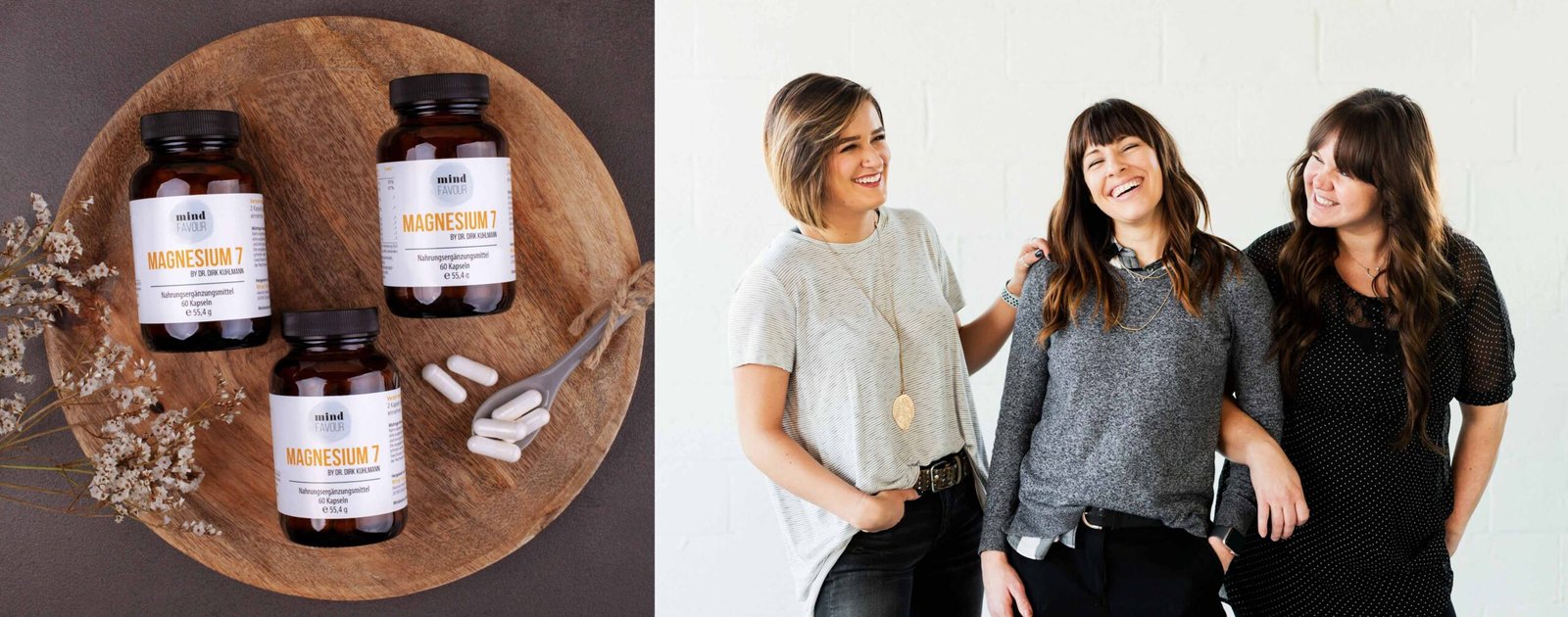Magnesium plays an often overlooked yet profoundly essential role in women’s health. From supporting bone strength and cardiovascular function to managing hormonal fluctuations, this humble mineral quietly powers many of the body’s vital processes. But when it comes to women’s reproductive health, magnesium’s impact becomes even more significant. Its role spans from easing premenstrual symptoms to improving fertility outcomes and even supporting pregnancy and postpartum recovery.
In today’s modern lifestyle—marked by stress, poor dietary habits, and disrupted sleep cycles—magnesium deficiency is more common than many realize, and women may be disproportionately affected due to their unique physiological needs. Understanding how magnesium works in the female body, particularly in relation to reproductive and psychological health, is key to unlocking a more balanced and empowered approach to well-being. This article explores the multifaceted benefits of magnesium for women and offers guidance on how to incorporate it through diet and supplementation in a safe, sustainable way.
Background and History
Magnesium has quietly stood the test of time as one of the most essential minerals for human health. Discovered in the 18th century and named after the Greek region of Magnesia, magnesium was first studied for its role in soil and agriculture. It wasn’t long before scientists uncovered its significance inside the human body—where it participates in more than 300 enzymatic reactions, influencing everything from energy production and nerve function to muscle contraction and hormonal balance.
Historically, magnesium was naturally abundant in traditional diets, especially those rich in whole grains, leafy greens, nuts, seeds, and mineral-rich water. However, as food processing became more widespread, the magnesium content of many staple foods significantly declined. Coupled with modern farming methods that deplete the soil of its mineral content, magnesium deficiency has emerged as a silent epidemic in both developed and developing countries.
Women, in particular, have faced unique challenges in maintaining adequate magnesium levels. Biological events such as menstruation, pregnancy, lactation, and menopause increase the body’s need for this mineral. Clinical observations dating back to the mid-20th century began noting correlations between magnesium deficiency and symptoms like menstrual cramps, mood swings, irritability, fatigue, and sleep disturbances. Over the decades, these associations gained scientific weight through controlled studies that confirmed magnesium’s regulatory influence on estrogen metabolism, neurotransmitter balance, and muscular relaxation.
In traditional medicine systems too—such as Ayurveda and naturopathy—magnesium-rich natural remedies were used to treat reproductive and nervous system imbalances in women. Whether it was Epsom salt baths for calming nerves or leafy greens prescribed for strengthening the uterus, magnesium’s role in women’s health was acknowledged long before modern medicine gave it formal recognition.
Today, as scientific research increasingly validates these time-honored observations, magnesium is once again gaining attention—not just as a micronutrient, but as a key to unlocking better hormonal health, emotional well-being, and reproductive vitality in women. The growing awareness around magnesium’s multifaceted role underscores the need to revisit our diets and lifestyles with this often-neglected mineral in mind.
General Health Benefits of Magnesium for Women
Magnesium is often referred to as a “master mineral” for good reason—it plays a central role in maintaining overall health and cellular function. For women, its significance extends well beyond basic nutrition. It supports cardiovascular health, strengthens bones, regulates blood sugar, and helps in muscle and nerve coordination. Despite being required in relatively small amounts, even a mild deficiency can lead to symptoms that impact daily life, such as fatigue, headaches, and muscle cramps. What makes magnesium especially valuable is its ability to interact with other essential nutrients, enhancing their absorption and efficacy—such as calcium, potassium, and vitamin D. With age, hormonal changes and increased stress levels can drain magnesium reserves, making regular intake all the more important. Below are some of the most clinically documented health benefits of magnesium for women, and how this essential mineral works within the body to deliver them.
Bone Health and Osteoporosis Prevention
Women are at a higher risk of osteoporosis, particularly after menopause due to the decline in estrogen levels. Magnesium supports bone health by assisting in the activation of vitamin D, which in turn enhances calcium absorption. It also helps regulate parathyroid hormone (PTH), a key hormone involved in maintaining calcium levels in the blood and bone. Clinical studies have demonstrated that magnesium-deficient individuals tend to have lower bone mineral density, increasing their fracture risk. Furthermore, magnesium contributes directly to the structural development of bone tissue. Regular intake—through diet or supplementation—has been associated with reduced bone turnover and improved bone strength in postmenopausal women. In essence, magnesium acts as a synergist to calcium, ensuring it’s deposited into the bone rather than soft tissues, thereby maintaining skeletal integrity over the long term.
Cardiovascular Support
Magnesium’s influence on heart health is well-documented. It plays a role in maintaining a steady heartbeat, regulating blood pressure, and supporting vascular elasticity. For women, especially after the age of 40, cardiovascular risk factors tend to increase, and magnesium deficiency can exacerbate them. This mineral functions as a natural calcium channel blocker—helping blood vessels relax and reducing hypertension. Additionally, it modulates lipid metabolism and prevents arterial plaque formation. Studies have linked higher magnesium intake with a lower risk of stroke and heart disease, particularly in women with pre-existing risk factors such as diabetes or metabolic syndrome. Magnesium also plays a role in reducing inflammation markers like C-reactive protein (CRP), which are directly linked to heart disease risk. Regular intake, especially through whole foods, can offer significant protection against cardiovascular complications.
Blood Sugar Regulation
Magnesium is integral to insulin signaling and glucose metabolism. In women, especially those with polycystic ovary syndrome (PCOS) or gestational diabetes, magnesium can help regulate blood sugar levels more effectively. This mineral enhances insulin sensitivity by facilitating the transport of glucose into cells and reducing oxidative stress in pancreatic beta cells. Research has consistently shown that magnesium deficiency is linked to insulin resistance—a precursor to type 2 diabetes. For women managing PCOS, magnesium can assist in mitigating hyperinsulinemia, thereby reducing associated symptoms like acne, weight gain, and irregular menstruation. Adequate magnesium intake has also been correlated with a lower risk of developing type 2 diabetes in long-term observational studies. Supporting blood sugar balance through magnesium not only improves energy and mood but also prevents the long-term complications associated with chronic hyperglycemia.
Muscle Function and Cramp Prevention
Muscle cramps, tension, and spasms are common issues among women, particularly during menstruation, pregnancy, or physical exertion. Magnesium aids in muscle contraction and relaxation by regulating the movement of calcium and potassium ions across muscle cell membranes. It acts as a natural muscle relaxant and can significantly reduce the frequency and intensity of cramps when taken regularly. This is particularly important for pregnant women who often experience nighttime leg cramps due to altered fluid balance and increased nutrient demands. Research has found that magnesium supplementation can reduce the severity of menstrual cramps (dysmenorrhea) by relaxing uterine muscles and decreasing prostaglandin levels, which are compounds associated with pain and inflammation. For athletes or those engaged in intense physical activity, magnesium also assists in preventing muscle fatigue and supporting quicker recovery.
Psychological Health Benefits of Magnesium for Women
The connection between magnesium and psychological well-being is profound yet often underappreciated. This essential mineral plays a critical role in regulating the body’s response to stress and maintaining a stable mood. Women, particularly during periods of hormonal fluctuations—such as menstruation, pregnancy, postpartum, or menopause—often experience emotional imbalances that can be worsened by magnesium deficiency. Modern lifestyle stressors, poor dietary habits, and disrupted sleep patterns further drain magnesium reserves, making it harder for the nervous system to function optimally. Clinically, magnesium has been observed to influence the activity of neurotransmitters like serotonin, dopamine, and GABA, which regulate mood, anxiety, and sleep. Its ability to calm the nervous system, reduce inflammation, and stabilize blood sugar all contribute to a more balanced mental state. Below are some of the key psychological benefits of magnesium for women, backed by clinical observations and research findings.
Stress Reduction and Anxiety Management
Magnesium functions as a natural tranquilizer by modulating the hypothalamic-pituitary-adrenal (HPA) axis—the system responsible for the body’s stress response. When women experience chronic stress, magnesium levels can drop rapidly, exacerbating symptoms of anxiety and creating a vicious cycle. This mineral helps regulate cortisol production and enhances the calming action of gamma-aminobutyric acid (GABA), a neurotransmitter that slows down brain activity. Clinical studies have shown that magnesium supplementation can significantly reduce symptoms of generalized anxiety, especially in women experiencing premenstrual syndrome or perimenopausal mood swings. Its calming effect is not sedative but restorative, helping the body reset and adapt to stress more effectively. Women with magnesium-rich diets tend to report better emotional resilience and lower levels of perceived stress compared to those with inadequate intake.
Mood Stabilization and Depression Support
Fluctuating estrogen levels can heavily influence mood, and magnesium acts as a buffer against the resulting emotional instability. It plays a pivotal role in the synthesis of serotonin, often referred to as the “feel-good” hormone. When magnesium levels are low, serotonin production may decline, contributing to symptoms of depression. In fact, some studies have found that individuals with low magnesium status are more likely to experience depressive symptoms, especially during the premenstrual phase or postpartum period. Supplementation has been shown to improve mood in women with mild to moderate depression, especially when combined with other lifestyle interventions such as exercise and improved sleep. Magnesium’s anti-inflammatory properties may also contribute to its antidepressant effects, as neuroinflammation has been increasingly linked to mood disorders.
Improved Sleep Quality
Quality sleep is essential for psychological well-being, yet women often experience sleep disturbances due to hormonal changes, stress, or lifestyle demands. Magnesium supports deep, restorative sleep by activating the parasympathetic nervous system and increasing GABA activity in the brain. It also helps regulate melatonin, the hormone responsible for maintaining the sleep-wake cycle. Women with low magnesium levels frequently report symptoms such as difficulty falling asleep, frequent nighttime awakenings, and poor sleep quality. Clinical trials have confirmed that magnesium supplementation can improve sleep latency, duration, and efficiency, particularly in individuals with insomnia or restless leg syndrome. The result is not only better sleep but also improved emotional balance and daytime energy levels—both critical for mental health.
Reproductive Health Benefits of Magnesium for Women
Women’s reproductive health is shaped by a complex interplay of hormones, nutrients, and environmental influences. Among the many micronutrients involved, magnesium holds a central position due to its ability to regulate hormonal activity, reduce inflammation, and support tissue integrity. Whether navigating puberty, managing fertility, going through pregnancy, or transitioning into menopause, women experience unique physiological challenges that heighten their need for magnesium. Its role extends beyond symptom relief; magnesium helps normalize menstrual cycles, ease pregnancy-related discomforts, and promote uterine health. Clinical findings have increasingly recognized magnesium’s therapeutic potential in addressing common reproductive concerns such as premenstrual syndrome, polycystic ovary syndrome, and gestational complications. The following are some of the most significant reproductive health benefits of magnesium for women, explained in detail.
Relief from Premenstrual Syndrome (PMS)
PMS affects a large number of women worldwide, manifesting in symptoms such as bloating, mood swings, irritability, breast tenderness, and food cravings. Magnesium is believed to influence PMS by regulating neurotransmitters and modulating the actions of estrogen and progesterone. Research has found that women with PMS often have lower intracellular magnesium levels, making them more susceptible to its symptoms. By boosting serotonin levels and improving fluid balance, magnesium helps ease both the emotional and physical discomforts associated with PMS. It also helps alleviate migraines and tension headaches that many women experience before menstruation. Regular intake of magnesium, especially in combination with vitamin B6, has been shown to significantly reduce the severity and duration of PMS symptoms, offering a natural and sustainable alternative to pharmacological interventions.
Support in Polycystic Ovary Syndrome (PCOS)
PCOS is a hormonal disorder that affects many women of reproductive age and is characterized by irregular periods, cystic ovaries, and elevated androgen levels. Insulin resistance is a key feature of PCOS, and magnesium helps improve insulin sensitivity, thus addressing one of the root causes of the condition. By reducing oxidative stress and lowering inflammation, magnesium supports hormonal balance and ovarian function. Some clinical studies have shown that women with PCOS often exhibit magnesium deficiencies, which may worsen their symptoms. Supplementation has been linked to reduced fasting glucose levels, improved menstrual regularity, and even enhanced fertility outcomes in women with PCOS. As part of a holistic approach involving lifestyle changes and dietary adjustments, magnesium serves as a gentle yet powerful ally in managing this often distressing condition.
Healthy Pregnancy and Reduced Complications
Magnesium is vital throughout pregnancy—for both the developing fetus and the mother. It supports cellular growth, protein synthesis, and muscle relaxation, all of which are critical during gestation. Low magnesium levels during pregnancy have been associated with complications such as preeclampsia, gestational hypertension, and preterm labor. This mineral helps maintain uterine tone, reduces the risk of uterine spasms, and supports proper blood pressure regulation. In addition, magnesium contributes to fetal bone and nervous system development, making it an essential part of prenatal nutrition. Some healthcare providers recommend magnesium supplementation in the second and third trimesters to prevent leg cramps, reduce anxiety, and promote better sleep in expecting mothers. Ensuring adequate magnesium intake through diet or supplements can improve maternal outcomes and contribute to a smoother, healthier pregnancy.
Menopause Symptom Management
The transition into menopause brings with it a cascade of hormonal changes that can disrupt mood, bone density, cardiovascular health, and sleep. Magnesium helps ease this transition by stabilizing fluctuating hormones and reducing common symptoms like irritability, insomnia, and hot flashes. It supports estrogen metabolism in the liver and helps maintain bone strength—a critical concern for postmenopausal women at risk of osteoporosis. Clinical findings suggest that magnesium may also reduce the intensity and frequency of menopausal migraines and mood disturbances. Additionally, its calming effect on the nervous system can help counteract anxiety and restlessness often experienced during this phase. Incorporating magnesium into the daily routine—especially when estrogen levels begin to drop—can make the journey through menopause more manageable and less disruptive to quality of life.
Dietary Sources of Magnesium for Women
Meeting daily magnesium needs through natural dietary sources is one of the most effective and sustainable ways to support reproductive and overall health. For adult women, the Recommended Dietary Allowance (RDA) for magnesium typically ranges from 310 to 320 mg per day, depending on age and physiological status. Pregnant and lactating women may require slightly higher amounts due to increased nutritional demands. Fortunately, magnesium is found in a variety of whole foods, especially those that are plant-based and minimally processed.
Leafy greens such as spinach, kale, and Swiss chard are among the most magnesium-rich vegetables. Just one cup of cooked spinach provides around 150 mg of magnesium—nearly 45% of the RDA. Legumes like black beans, chickpeas, and lentils also offer significant amounts, with one cup of cooked black beans delivering approximately 120 mg of magnesium.
Nuts and seeds are compact powerhouses of magnesium. A 28-gram serving of pumpkin seeds contains nearly 150 mg, while almonds and cashews contribute 75–85 mg per handful. Whole grains such as quinoa, brown rice, oats, and buckwheat also serve as excellent sources, especially when consumed in their unrefined forms. One cup of cooked quinoa provides about 115 mg, or around 35% of the RDA.
Dark chocolate—particularly varieties with 70% or higher cocoa content—is not only a delightful indulgence but also a noteworthy magnesium source, offering up to 65 mg per square (28 grams). Avocados, bananas, and figs are additional magnesium-rich fruits that blend well into daily meals.
It’s important to note that magnesium absorption can be influenced by other dietary factors. High intake of caffeine, alcohol, or processed foods may impair magnesium uptake, while the presence of vitamin D, B6, and certain amino acids can enhance it. Cooking methods also matter—boiling vegetables can cause magnesium loss into the water, so steaming or sautéing is often preferred to retain the mineral content.
By making small yet intentional adjustments to the diet—such as incorporating more greens, legumes, seeds, and whole grains—most women can meet or exceed their magnesium requirements naturally, without relying solely on supplements.
Supplementation: How to Use Magnesium Safely and Effectively
While dietary sources remain the most natural and preferable way to meet magnesium needs, supplementation becomes essential in certain situations—especially when deficiencies are confirmed or symptoms persist despite adequate diet. Women with specific health concerns such as premenstrual syndrome, polycystic ovary syndrome, chronic stress, insomnia, or pregnancy-related complications may benefit from magnesium supplements as part of a therapeutic plan.
Forms of Magnesium and Absorption
Magnesium is available in a variety of supplemental forms, each with unique absorption characteristics and therapeutic targets. Magnesium glycinate is one of the most popular choices for women, especially those dealing with anxiety, sleep disturbances, or PMS, due to its gentle effect on the stomach and high bioavailability. Magnesium citrate is well absorbed and often used to alleviate constipation or digestive discomfort. Magnesium oxide, though higher in elemental magnesium, has lower absorption and is better suited for short-term use or specific applications like acid reflux.
Magnesium L-threonate is a newer form that crosses the blood-brain barrier efficiently and is being explored for cognitive and neurological benefits. For women with muscle cramps or during pregnancy, magnesium malate or magnesium chloride may be used, depending on individual needs and tolerance.
Recommended Dosage
The general supplemental dosage for adult women ranges between 200–400 mg per day of elemental magnesium. It’s best to start with a lower dose (100–200 mg) and gradually increase if needed, under the guidance of a healthcare provider. Women with increased demands—such as during pregnancy, lactation, or chronic stress—may require higher intakes, but exceeding 350 mg from supplements without medical supervision is not recommended due to potential side effects.
Taking magnesium in divided doses (e.g., morning and evening) or with meals can help improve absorption and reduce the chance of gastrointestinal discomfort. It’s also important to ensure hydration, especially if magnesium is being used for its laxative effects.
Safety and Side Effects
Magnesium supplementation is generally considered safe when used appropriately, but excessive intake can lead to adverse effects, particularly gastrointestinal issues such as diarrhea, bloating, or cramping. These are more common with magnesium oxide or high-dose citrate. In rare cases, extremely high magnesium levels (typically from overuse of supplements or intravenous administration) can cause toxicity, leading to symptoms such as low blood pressure, nausea, lethargy, and irregular heartbeat.
Women with kidney disorders should be especially cautious, as impaired renal function reduces the body’s ability to eliminate excess magnesium. For most healthy individuals, however, supplementation within recommended limits is well tolerated and offers substantial benefits.
As with all supplements, it’s advisable to consult a healthcare provider before starting magnesium—particularly if you’re pregnant, breastfeeding, or taking medications such as antibiotics, diuretics, or calcium-channel blockers that may interact with magnesium.
Conclusion
Magnesium is more than just a supporting player in women’s health—it is a foundational nutrient that touches every system in the body, from the brain to the bones and the reproductive organs. Its influence on hormonal balance, emotional resilience, energy metabolism, and fertility underscores just how essential it is for women at every life stage. Whether it’s calming monthly menstrual discomfort, supporting a healthy pregnancy, reducing menopausal symptoms, or simply helping manage stress and sleep, magnesium offers a gentle, natural pathway to better well-being.
In an era of processed foods, chronic stress, and widespread nutritional imbalances, many women unknowingly fall short of their daily magnesium needs. The good news is that this gap can often be closed with a few intentional dietary choices—more leafy greens, legumes, seeds, and whole grains—or, when necessary, with thoughtful supplementation.
Listening to your body and recognizing early signs of magnesium deficiency—like fatigue, irritability, sleep trouble, or muscle cramps—can go a long way in preventing more serious issues. And when managed well, magnesium doesn’t just alleviate symptoms; it empowers women to feel more in tune with their bodies, more energized, and more in control of their health journey. It’s not about quick fixes—it’s about rebuilding balance from the inside out.
Disclaimer: The information on this page is not intended to be a substitute for professional medical advice. Do not use this information to diagnose or treatment of men’s and women’s sexual health and general health conditions without consulting the doctor. While we review and promote nutrients, herbs, Ayurvedic medicines, and alternative therapies for men’s and women’s sexual health and general health conditions, you must consult an authorized physician before taking any of the products.


































